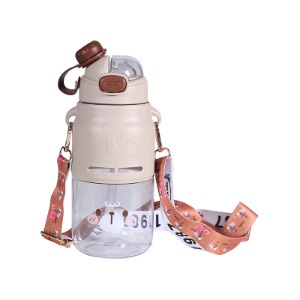Plastic water bottles, particularly those produced by a specialized Plastic Water Bottle Factory, are commonly manufactured using materials such as PET, PP, and Tritan. These plastics are chosen for their durability, lightweight properties, and transparency. However, each type of plastic has specific temperature tolerance thresholds. When exposed to heat beyond the recommended range, some plastics may begin to soften or deform. For example, PET bottles are designed mainly for cold beverages and may warp if filled with boiling water. On the other hand, Tritan and PP materials offer better heat resistance but still require users to follow proper usage guidelines. This heat sensitivity causes many manufacturers to include temperature warnings on bottle packaging or product labels to ensure consumer safety.

Mechanical Pressure and Impact Resistance
From a structural standpoint, plastic bottles vary in thickness and design depending on their intended purpose. Sports bottles and travel hydration bottles are typically thicker and reinforced to resist pressure and drops. However, lightweight disposable-style bottles are more prone to denting or losing shape under external force. Even high-quality plastic bottles may deform slightly when subjected to strong squeezing or improper handling, though the deformation is usually temporary. A well-engineered bottle, especially one designed for sports and outdoor environments, incorporates stronger wall construction, ribbing, or ergonomic shapes to maintain rigidity and reduce deformation risks.
Influence of UV Exposure and Aging
Another important factor that affects deformation is prolonged exposure to sunlight or UV radiation. UV light accelerates plastic aging, making it more brittle or less structurally stable over time. Outdoor enthusiasts who regularly carry bottles during cycling, hiking, or camping may notice gradual changes in appearance or rigidity if the bottle’s material lacks UV-resistant additives. Bottles stored in hot cars or direct sunlight for long periods may experience softening or weakening at stress points, especially the cap threads or bottle body. Modern high-performance plastic formulations often incorporate stabilizers that slow down UV degradation, improving the bottle’s lifespan and durability in outdoor conditions.
Impact of Improper Cleaning and Chemical Exposure
Improper cleaning practices may also contribute to deformation. Washing plastic bottles in extremely hot water or using incompatible cleaning chemicals can compromise the structural integrity of the material. Some users mistakenly place non-dishwasher-safe bottles on the top rack of a dishwasher, exposing them to high heat that may warp the bottle shape. Additionally, certain chemicals in detergents or sanitizers may react with plastics, weakening them over time. This is why many manufacturers clearly identify whether a bottle is dishwasher-safe and recommend handwashing when necessary.
User Habits and Practices for Avoiding Deformation
Although plastic bottles are engineered to withstand everyday use, user habits significantly impact their longevity. Avoiding extreme heat, preventing prolonged sun exposure, and using recommended cleaning methods all help preserve the bottle’s original shape. Using bottles according to manufacturer guidelines enhances safety and durability. In many cases, consumers mistakenly assume all plastic bottles can withstand boiling water or microwave heating, which is not recommended unless specifically stated. To ensure long-term performance, users should inspect bottles for signs of warping, cracks, or brittleness and replace them if structural integrity appears compromised.
In summary, plastic water bottles are not inherently prone to deformation under normal use when manufactured to high standards. With advancements in material science and engineering, mature production facilities such as modern Plastic Water Bottle Factory operations ensure that bottles maintain structural strength and functionality. Deformation usually results from misuse, extreme environments, or aging, rather than flaws in design or material quality. By selecting bottles made from high-quality materials and following proper usage care, consumers can enjoy reliable hydration solutions suitable for various daily and outdoor activities.

 English
English 中文简体
中文简体 Español
Español